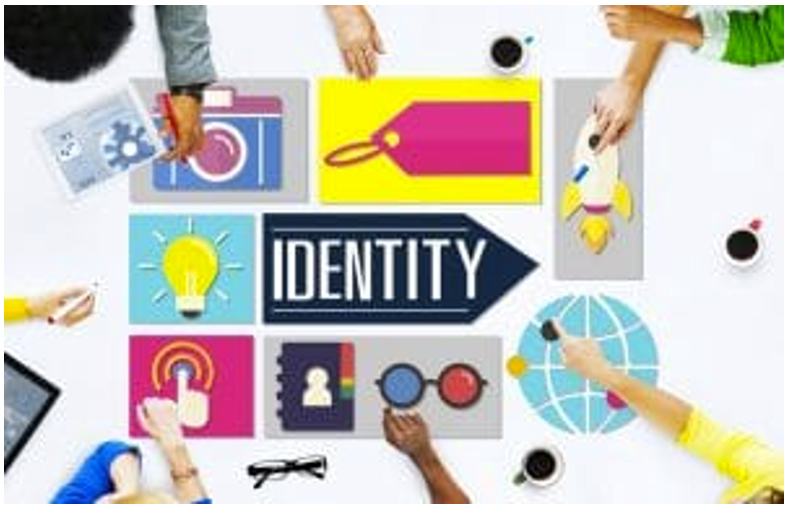The 7 Components of Brand Identity That Develop Your CPG Brand
The 7 Components of Brand Identity That Develop Your CPG Brand https://csuiteold.c-suitenetwork.com/advisors/wp-content/themes/csadvisore/images/empty/thumbnail.jpg 150 150 MIchael and Bonnie Harvey https://secure.gravatar.com/avatar/dfe7dbddd973f4b41b9f0e9b47ad6323?s=96&d=mm&r=g
What makes your CPG brand recognizable? What distinguishes it from the crowd? It doesn’t matter what you think. It’s what your customers think! You may be able to slightly influence what they think, but at the end of the day, it’s what they think.
Despite what some people say, most brands aren’t destroyed by competition—they’re destroyed by self-inflicted wounds! These are caused by marketing people who mean well, who think they’re in control, and try to develop a brand identity based on what they prefer, not necessarily what your customers prefer. In other words, your customers own your brand—you don’t!
Any conversation about brand identity must begin with this humble yet crucial recognition. Sure, you can do things to sway their thinking, but proceed with caution when creating your brand identity. Make sure it’s on a solid foundation of what your customer already thinks is important!
Image
How is your CPG displayed to your customer? Is it on a retail shelf, floor display, or on a screen? Is your customer 2 feet away, 4 feet away, or 20 feet away? Is it on both a billboard and a business card? Is it different for each situation?
Is it surrounded by other brands? How does it separate itself from them? Do its colors make it stand out? What about the logo, name, catchphrase, label, trade dress, package, and themes? Is it obvious to your customer what you’re selling? Is your packaging color-coded and clearly marked so the warehouseperson, trucker, store manager, and clerk each know what you’re selling?
Is your name memorable, relatable, and easy to pronounce? Does it have anything to do with your product? Can you recognize it from a distance? Could you pick it out from the slew of other branded products on the shelf if you were looking for it?
Does your trade dress change for events, seasons, and holidays? Does it rotate often to stay fresh?
Is your label artwork uncluttered and neat with sans-serif fonts and plenty of white space? These are just a few things you need to think about when creating your brand image.
Recognition
Is your brand easily recognizable?
What is your brand identity’s defining and most memorable feature? Have people seen it before in your advertising or online? Will they recognize its originality when they get to the store?
What efforts have you made for them to remember your brand? Is it something they’ve seen before? Is it something that comes to mind whenever they think about some feature of your branded product? Is it an unforgettable shape or color? Does your label, trade dress, or package show third-party endorsements from people your customers already know?
Or, have your sales been consistent enough that you’ve made a reputation for providing value that your customer identifies with your brand? This takes time and skilled distribution management to achieve, but it has allowed many dependable brands to succeed. In this case, a nonsense name or family name has existed long enough to stand its ground. This approach isn’t recommended for newly branded products. This type of brand recognition takes years of consistency and excellent customer service.
When you ‘improve’, freshen up, or alter your image, do you practice strategic evolution, or careless and shocking revolution? Is the brand “gone” all of a sudden?
Position
How is your brand perceived by the customer?
How do you place your brand by price? What is the price at which most branded products in your category sell, or the velocity price point? Is it the same as your price? If so, how do you compete? Do you deliver on quantity or quality? Or do you choose to appeal to different customer values, like awards, endorsements, or status?
Are you below the velocity price point and trying to undercut the pack? Is your customer willing to accept less to save more money? Do they expect less? Does a relatively lower price mean more convenience? Or, are you above the velocity price point, where your customers believe they are paying more for better quality? Or are you charging more out of necessity to deliver more value to stay relevant? And, does your brand image reflect value? What about your package, trade dress, and label? Do you use medallions, gold ink, or traditional style on your label to communicate quality? Or do you use reviews and endorsements?
What do your packaging choices communicate? Does it tower above the others to imply quantity or value? For instance, we’ve noticed that people think taller packages translate to greater volume. A one-liter box of wine is seen as less than a 750-ml. package due to its shorter stature.
Which category are you in? And which sub-category within the category are you in? All of this makes a big difference in how your customers see you. Changing your brand after it’s established could potentially push away your customers who are used to seeing your brand in your former category. Be cautious!
Promise
What does your customer expect of your brand?
This is where many brands fail! They wrongly believe that they control their brand promise. They think that the brand image they’ve advertised online, through marketing, and in their trade dress is a direct message to the customer about what to expect from their product, their brand—even their company!
While your customer does get their first impression about what to expect from these initiatives, they ultimately own your brand promise. Their expectations drive loyalty, advocacy, and most importantly, sales. When they change brands, it’s usually because their brand let them down. It didn’t meet their expectations.
What are those expectations, exactly? Quantity, quality, appearance, price, status, utility, availability, transparency, popularity, and various other factors that your customer notices. If you change just one of them, get ready for the marketplace to react. Customers are loyal to brands they rely on. Finding a new brand is stressful. What will they buy now? How many brands will they have to sift through to find what you gave them, but they somehow lost?
And what about integrity? Do you deliver on your promises? Does your branded product constantly deliver the same or better benefits and features over time? Your customer’s expectations are molded by their experiences with your product. Don’t frustrate them by making unexpected changes.
Are your branded products dependable? Can your customers rely on them? Are they always in stock? If not, your customers will blame you, and see your brand as undependable.
Personality
Does a fictitious character or a spokesperson represent your brand?
Is there a face behind your brand, someone who’s accountable for delivering your promise to the customer? Is it someone recognizable, like a celebrity? Is it you? Is it the President, CEO, or Founder of your company? Does anyone look them straight in the eye and guarantee your brand?
Does a cartoon character, mascot, or specific style convey some feature of your brand? Or does your brand have a personality of its own? Is it reliable, fun, strong, distinguished, powerful, or carefree?
Your brand’s personality will boost your brand’s position, image, and promise. A personal guarantee can turn customers into supporters, and can encourage first-time buyers.
Aside from the physical qualities it delivers, what does your brand stand for? Are you an advocate for your community? Are you a green producer? Are you a good neighbor? Are you an open-minded employer? Where do you stand on issues crucial to your customers’ health and welfare? To put it simply, are you a good person? Now more than ever before, customers vote with their money. Do you give them a good reason to vote for you and what your brand stands for?
“Brand width”
How many products can you offer before your brand collapses? Just like bandwidth, there’s a cap on how many SKUs (Stock Keeping Units) your brand can hold. If you exceed your brand width, retailers will need to ask which products you want to get rid of to make room for the new ones.
You’ll exceed your brand width when your production and marketing teams start to think success comes from having more products rather than more sales. More products doesn’t always translate to greater profits or more sales. It may actually cheapen or confuse your brand in your consumers’ and retail buyers’ eyes.
It seems logical at first. By simply introducing a new product or extending a product line, you’ll get more retail space. But then, it turns into a fight to see how many products your brand can actually support. This is all based on the incorrect assumption that shelf space is unlimited, or that there is an unlimited amount of mind-share when it comes to sales and distribution. But there isn’t! Your brand width is limited!
When a brand collapses, it usually withdraws to its core offerings, and for good reason. It’s easier to manage, and it’s easy to get and keep shelf space. Are too many products hurting your brand image?
Availability
Is your brand still on the shelf?
The absolute worst customer experience happens when your CPG brand customer can no longer find your brand where they shop. Maybe it’s not in stock. Maybe it’s in the back. Maybe it was discontinued. Maybe your distributor got on the retail buyer’s bad side, and now he’s no longer buying anything from them. The reason doesn’t matter—your customer won’t blame your retailer or the distributor. They’ll blame you. It’s your brand’s fault. Now it’s “too hard to get” and “unreliable” in their eyes.
A lot of marketers and brand builders take the distribution process for granted, but all the time, effort, and money spent on CPG branding is lost as soon as it goes out of stock. There can’t be a conversation about brand identity without a deep understanding and appreciation for the distribution process.
How can your labeling, packaging, and cartons be designed to make it through the distribution process easily, without any missed deliveries, confusion, or misunderstandings? What do you need to do to guarantee delivery and keep your brand stocked in retail? How about to ensure proper placement, pricing, and advertising at the point of sale?
A monumental part of your brand identity is a reputation for reliability. This starts with dependable and convenient access, and doesn’t end until the shelf has been restocked. Retail buyers can only measure sales. Once your product is out of stock, they can’t judge the sales you would’ve made if your product were stocked the whole time. A brand can be discontinued for poor sales due to wrong pricing, wrong placement, or poor inventory control. The physical distribution system puts your brand image on the line! Your customer can’t buy it if it isn’t there!
As you can see, brand identity is a multidimensional arrangement of crucial elements. Each of them needs to be carefully developed, executed, and sustained. Brand identity is not the destination—it’s the ongoing journey that requires nonstop diligence. When each of these aspects is considered, your customers will be more likely to proudly say, “That’s my brand!”
For more, read on: http://c-suitenetworkadvisors.com/advisor/michael-houlihan-and-bonnie-harvey/


